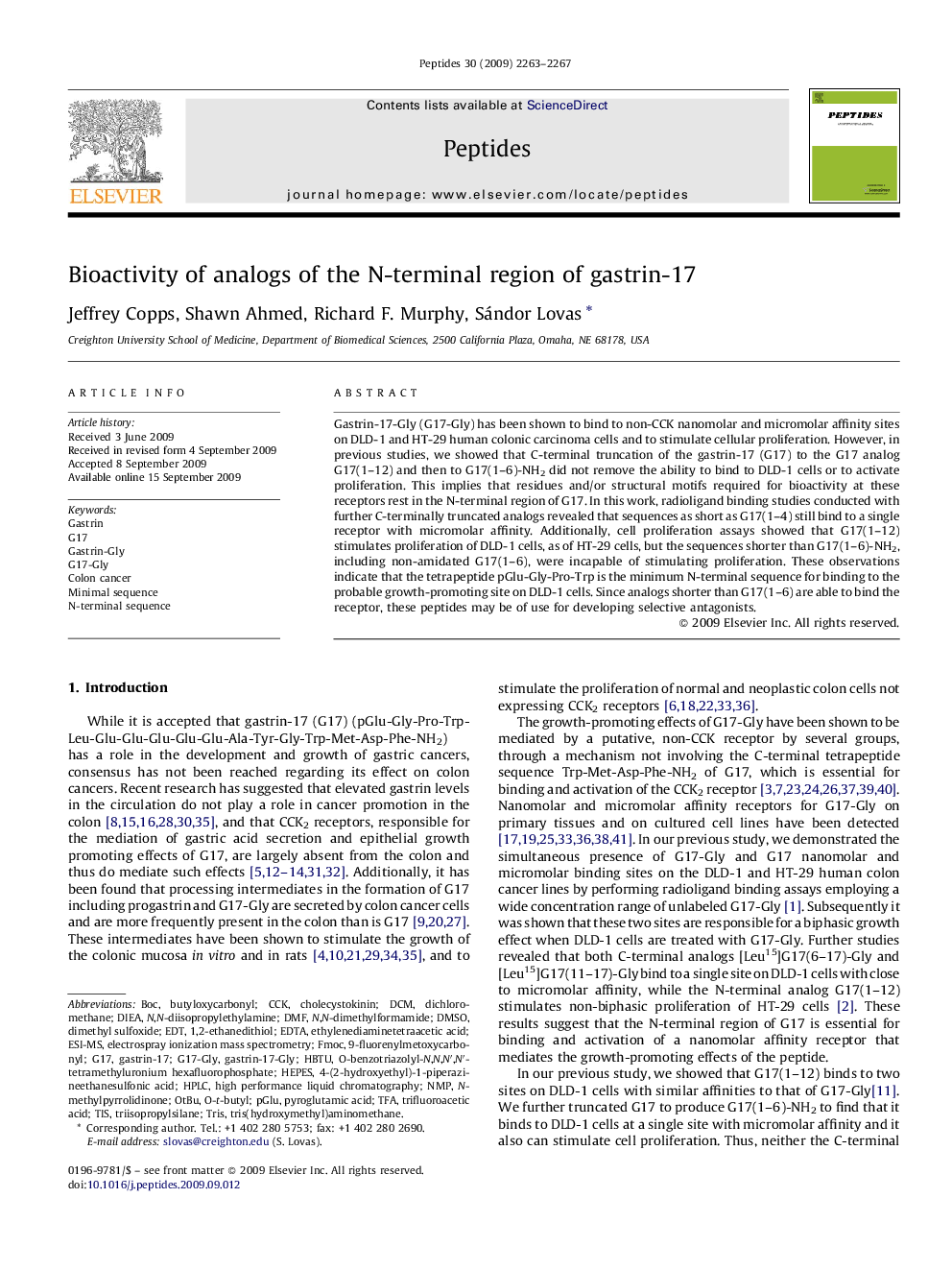| Article ID | Journal | Published Year | Pages | File Type |
|---|---|---|---|---|
| 2007050 | Peptides | 2009 | 5 Pages |
Gastrin-17-Gly (G17-Gly) has been shown to bind to non-CCK nanomolar and micromolar affinity sites on DLD-1 and HT-29 human colonic carcinoma cells and to stimulate cellular proliferation. However, in previous studies, we showed that C-terminal truncation of the gastrin-17 (G17) to the G17 analog G17(1–12) and then to G17(1–6)-NH2 did not remove the ability to bind to DLD-1 cells or to activate proliferation. This implies that residues and/or structural motifs required for bioactivity at these receptors rest in the N-terminal region of G17. In this work, radioligand binding studies conducted with further C-terminally truncated analogs revealed that sequences as short as G17(1–4) still bind to a single receptor with micromolar affinity. Additionally, cell proliferation assays showed that G17(1–12) stimulates proliferation of DLD-1 cells, as of HT-29 cells, but the sequences shorter than G17(1–6)-NH2, including non-amidated G17(1–6), were incapable of stimulating proliferation. These observations indicate that the tetrapeptide pGlu-Gly-Pro-Trp is the minimum N-terminal sequence for binding to the probable growth-promoting site on DLD-1 cells. Since analogs shorter than G17(1–6) are able to bind the receptor, these peptides may be of use for developing selective antagonists.
